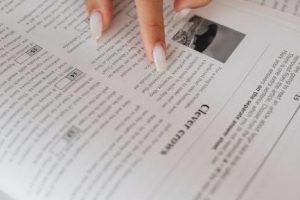respiratory system study guide

The respiratory system is a vital network of organs and tissues responsible for exchanging oxygen and carbon dioxide, essential for cellular respiration and overall bodily function.
It includes structures like the nose, pharynx, larynx, trachea, bronchi, and lungs, working together to facilitate breathing and maintain acid-base balance through gas exchange.
1.1 Overview of the Respiratory System
The respiratory system is a complex network of organs and tissues designed to bring air into the body, facilitate gas exchange, and expel waste gases. It includes the upper respiratory tract (nose, nasal cavity, pharynx) and the lower respiratory tract (larynx, trachea, bronchi, and lungs). The system works to filter, warm, and humidify inhaled air before it reaches the alveoli, where oxygen diffuses into the bloodstream and carbon dioxide is removed. This process is vital for cellular respiration and overall bodily function.
1.2 Importance of the Respiratory System
The respiratory system is fundamental for sustaining life as it provides oxygen essential for cellular energy production and removes carbon dioxide; It also supports communication through speech and vocalization, aids in smelling, and regulates the body’s acid-base balance. Additionally, it filters, warms, and humidifies air, protecting the body from harmful particles. Without it, the body cannot function, making it a cornerstone of human physiology and essential for overall health.

Functions of the Respiratory System
The respiratory system’s primary functions include supplying oxygen to the body, removing carbon dioxide, enabling gas exchange, and supporting processes like speech and maintaining acid-base balance.
2.1 Oxygen Supply and Carbon Dioxide Removal
The respiratory system ensures a continuous supply of oxygen to the body’s cells and removes carbon dioxide through exhalation. This process is crucial for cellular metabolism, maintaining energy production, and preventing toxin buildup. Oxygen is absorbed into the bloodstream via the alveoli in the lungs, while carbon dioxide, a byproduct of cellular respiration, is expelled. This exchange maintains homeostasis and supports overall bodily functions efficiently.
2.2 Gas Exchange Process
Gas exchange occurs in the alveoli, tiny air sacs in the lungs, where oxygen from inhaled air diffuses into the bloodstream through the alveolar membrane and capillaries. Simultaneously, carbon dioxide, a waste product, diffuses out of the blood and into the alveoli to be exhaled. This process relies on the concentration gradient between the air and blood, ensuring efficient oxygenation and removal of carbon dioxide, which is vital for maintaining proper cellular function and overall health.

Anatomy of the Respiratory System
The respiratory system includes the upper respiratory tract (nose, nasal cavity, pharynx) and lower respiratory tract (larynx, trachea, bronchi, lungs), designed for air passage and gas exchange.
3.1 Upper Respiratory Tract
The upper respiratory tract includes the nose, nasal cavity, and pharynx. It filters, warms, and humidifies inhaled air, preparing it for the lungs. The nose acts as the primary entry point, while the pharynx serves as a shared pathway for both air and food. This section is crucial for initial air processing and defense against pathogens, ensuring clean air reaches the lower respiratory system.
3.2 Lower Respiratory Tract
The lower respiratory tract comprises the larynx, trachea, bronchi, and lungs. The larynx contains vocal cords and regulates air passage. The trachea divides into bronchi, leading to the lungs. Within the lungs, bronchi branch into bronchioles, ending in alveoli, where gas exchange occurs. This system is essential for oxygen absorption into the bloodstream and carbon dioxide removal, maintaining proper respiratory function and overall health.

Path of Air Through the Respiratory System
Air enters through the nose or mouth, passing through the pharynx, larynx, and trachea, before branching into bronchi and reaching the lungs for gas exchange.
4.1 Entry Through Nose or Mouth
Air enters the respiratory system through the nose or mouth, where it is filtered, warmed, and humidified. The nasal cavity contains cilia and mucus, trapping dust and pathogens, while the mouth serves as an alternative entry point, especially during increased respiratory demand. This initial stage ensures air is prepared for further passage into the respiratory tract, maintaining the quality of air reaching the lungs. The process is vital for preventing infections and maintaining respiratory health.
4.2 Movement Through Pharynx, Larynx, and Trachea
After entering through the nose or mouth, air passes through the pharynx, a shared pathway for food and air. The larynx, or voice box, contains vocal cords and is protected by the epiglottis, which prevents food from entering the airway. Air then travels through the trachea, a cartilage-reinforced tube, before reaching the bronchi. This pathway ensures safe and efficient air movement toward the lungs, with protective mechanisms like the epiglottis preventing aspiration and maintaining respiratory function.
4.3 Distribution Through Bronchi to Lungs
Air from the trachea divides into the right and left bronchi, leading to the lungs. Each bronchus branches into smaller bronchioles, eventually reaching alveoli, where gas exchange occurs. The bronchi are lined with cilia and mucus, filtering and moving debris. As air reaches the alveoli, oxygen diffuses into capillaries, and carbon dioxide is expelled. This network ensures efficient oxygen distribution and carbon dioxide removal, vital for cellular respiration and overall bodily function.

Key Structures and Their Functions
The respiratory system includes essential structures like the nose, pharynx, larynx, trachea, bronchi, and alveoli, each playing a unique role in air passage, filtration, and gas exchange.
5.1 Nose, Nasal Cavity, and Pharynx
The nose and nasal cavity act as the entry point for air, filtering, warming, and humidifying it. The pharynx, a shared pathway for both food and air, directs inhaled air towards the larynx. These structures ensure that air is prepared for efficient gas exchange in the lungs, while also preventing harmful particles from entering deeper respiratory pathways. Proper functioning of these areas is crucial for maintaining respiratory health and overall bodily function.
5.2 Larynx, Trachea, Bronchi, and Alveoli
The larynx, or voice box, contains vocal cords and regulates the passage of air. The trachea, a cartilage-lined tube, leads to the chest, splitting into bronchi that branch into smaller bronchioles. These airways terminate in alveoli, tiny sacs where gas exchange occurs. Alveoli are surrounded by capillaries, enabling oxygen to diffuse into the blood and carbon dioxide to exit. This intricate network ensures efficient oxygenation and removal of waste gases, vital for cellular respiration and overall health.
Breathing Process
The breathing process involves the contraction and relaxation of the diaphragm, facilitating inhalation and exhalation. Air enters through the nose or mouth, moving into the lungs, essential for oxygen supply and carbon dioxide removal.
6.1 Inhalation and Exhalation Mechanisms
Inhalation occurs as the diaphragm contracts, creating a vacuum that pulls air through the nose or mouth into the lungs. Exhalation follows when the diaphragm relaxes, and the chest cavity shrinks, pushing air out. These mechanisms are essential for gas exchange, enabling oxygen to enter the bloodstream and carbon dioxide to be removed. The process is regulated by the autonomic nervous system, ensuring continuous breathing without conscious effort.
6.2 Role of the Diaphragm
The diaphragm is the primary muscle responsible for breathing, separating the chest cavity from the abdominal cavity. During inhalation, the diaphragm contracts and flattens, increasing chest volume and lowering air pressure inside the lungs, allowing air to flow in. During exhalation, it relaxes and returns to its dome shape, reducing chest volume and pushing air out of the lungs. This muscle is crucial for maintaining proper breathing patterns and overall respiratory efficiency.
Gas Exchange and Oxygen Transport
Gas exchange occurs in alveoli, where oxygen diffuses into blood and carbon dioxide exits. Oxygen binds to hemoglobin in red blood cells for transport to tissues, supporting cellular respiration.
7.1 Alveoli and Capillary Interaction
The alveoli, tiny air sacs in the lungs, interact with capillaries to facilitate gas exchange. Oxygen from inhaled air diffuses through the alveolar walls into capillaries, binding to hemoglobin in red blood cells for transport to tissues. Simultaneously, carbon dioxide from deoxygenated blood diffuses into alveoli and is exhaled. This efficient exchange relies on the thin walls of alveoli and capillaries, ensuring proper oxygenation of blood and removal of waste gases.
This interaction is vital for maintaining cellular respiration and overall bodily function, emphasizing the respiratory system’s critical role in sustaining life.
7.2 Blood Oxygenation and Carbon Dioxide Removal
Blood oxygenation occurs as oxygen from the alveoli diffuses into the bloodstream, binding to hemoglobin in red blood cells. This oxygen-rich blood is distributed to tissues and organs. Simultaneously, carbon dioxide, a waste product of cellular metabolism, is transported back to the lungs via the bloodstream. In the alveoli, CO2 diffuses into the airspaces and is exhaled, maintaining proper acid-base balance and ensuring efficient gas exchange.
This process is crucial for cellular respiration and overall bodily function, highlighting the respiratory system’s essential role in oxygenation and waste removal.
Review and Key Concepts
The respiratory system’s structure and function are vital for oxygen supply and carbon dioxide removal. Key concepts include the role of the diaphragm, gas exchange, and major organs.
Essential vocabulary and practice questions reinforce understanding of inhalation, exhalation, and the pathway of air through the respiratory tract, ensuring a comprehensive grasp of the topic.
8.1 Major Vocabulary and Terminology
Key terms include nose (filters, warms, moistens air), pharynx (shared passage for food and air), larynx (voice box with vocal cords), and trachea (windpipe leading to chest).
- Bronchi: Air passages dividing into smaller bronchioles within lungs.
- Alveoli: Tiny sacs where gas exchange occurs (oxygen in, carbon dioxide out).
- Diaphragm: Primary muscle enabling inhalation and exhalation.
- Epiglottis: Flap preventing food from entering airways during swallowing.
Understanding these terms is crucial for mastering respiratory system functions and processes like gas exchange and breathing mechanisms.
8.2 Practice Questions and Diagrams
Enhance understanding with practice questions and visual aids. Multiple-choice questions cover functions, anatomy, and gas exchange processes; True/false statements test knowledge of key concepts like the role of the diaphragm and alveolar function. Diagrams include labeled illustrations of the respiratory tract, alveoli, and capillary interactions. Interactive exercises, such as identifying structures on a lung cross-section, reinforce learning. Case studies and clinical scenarios apply theoretical knowledge to real-world respiratory conditions, ensuring comprehensive mastery of the topic.